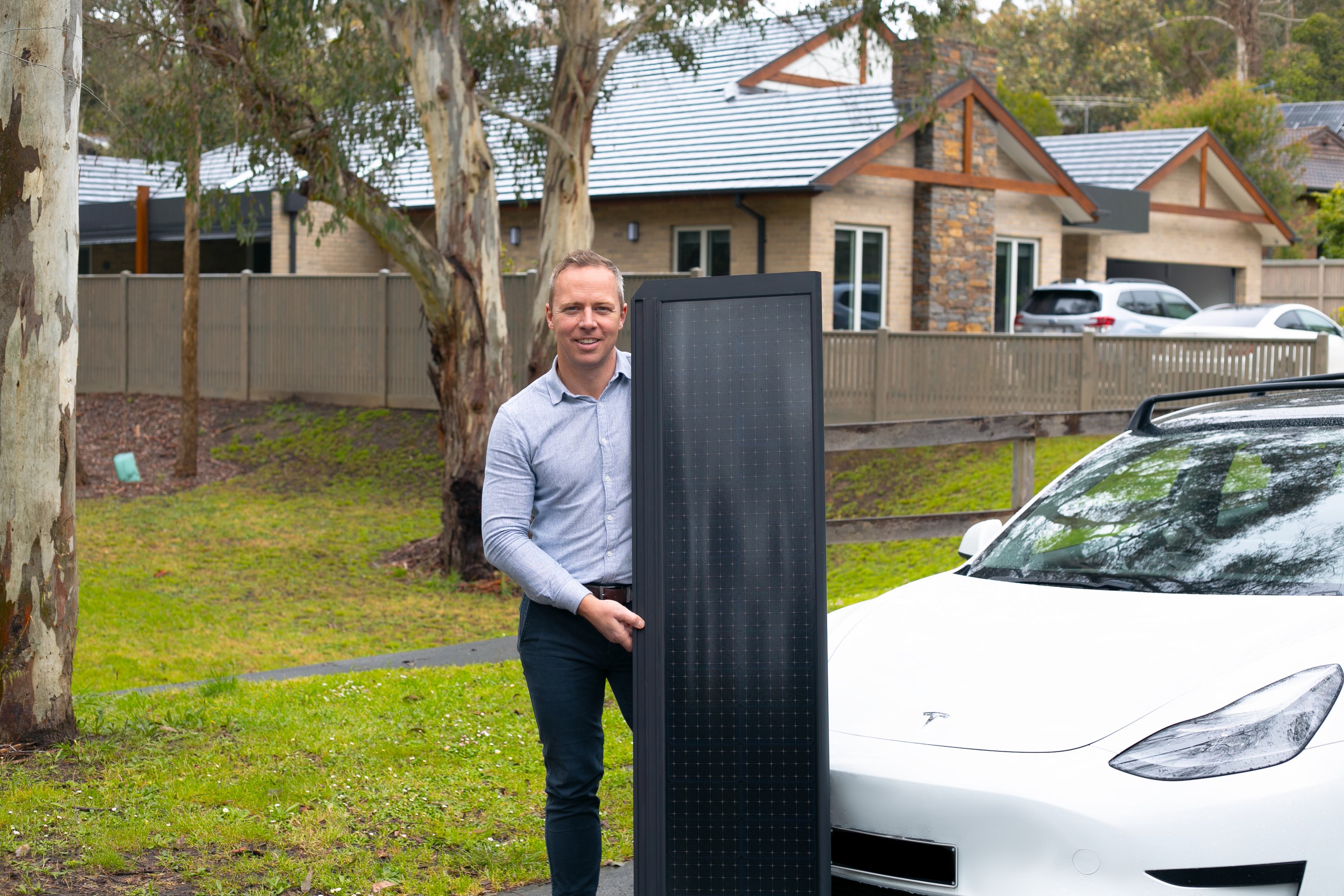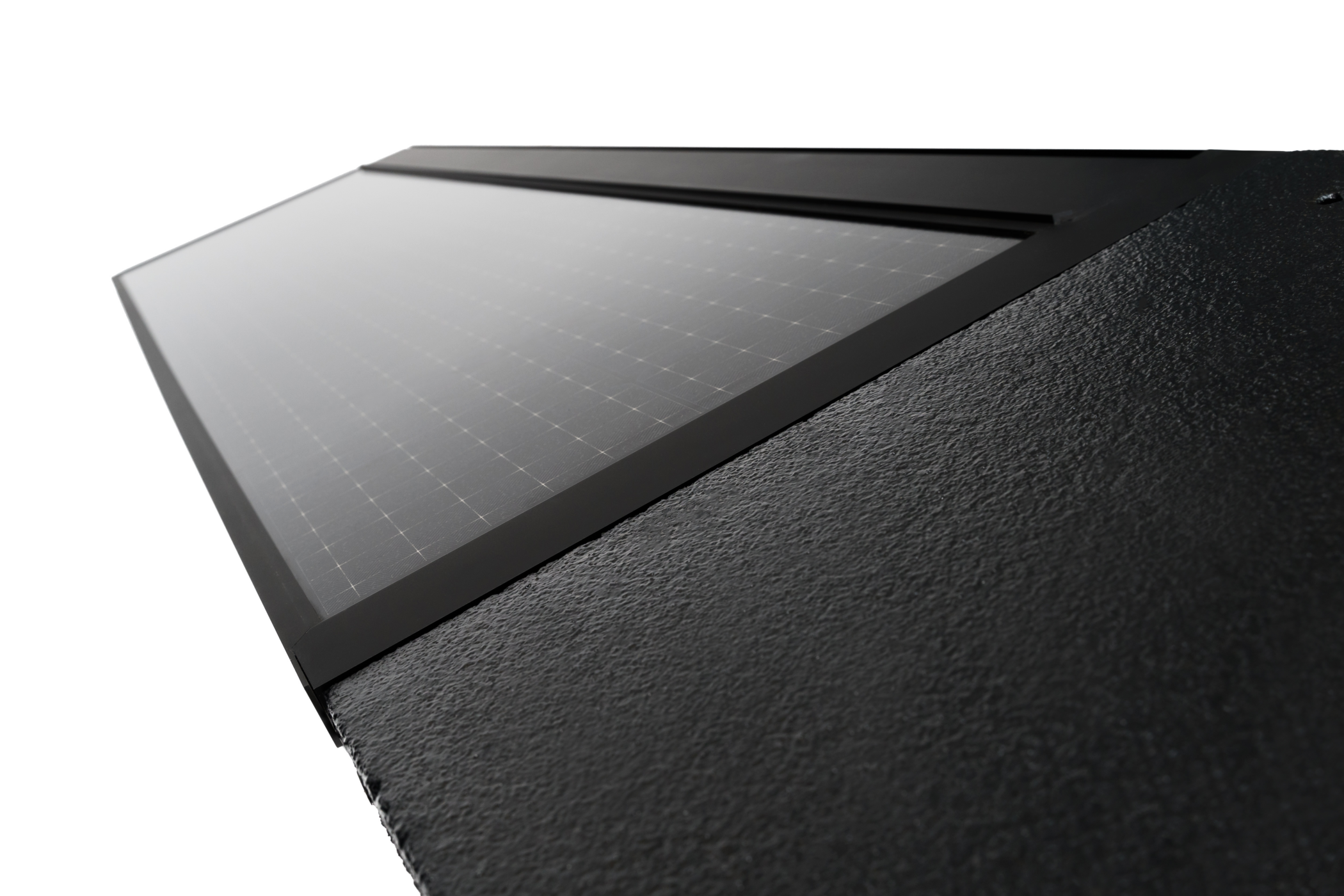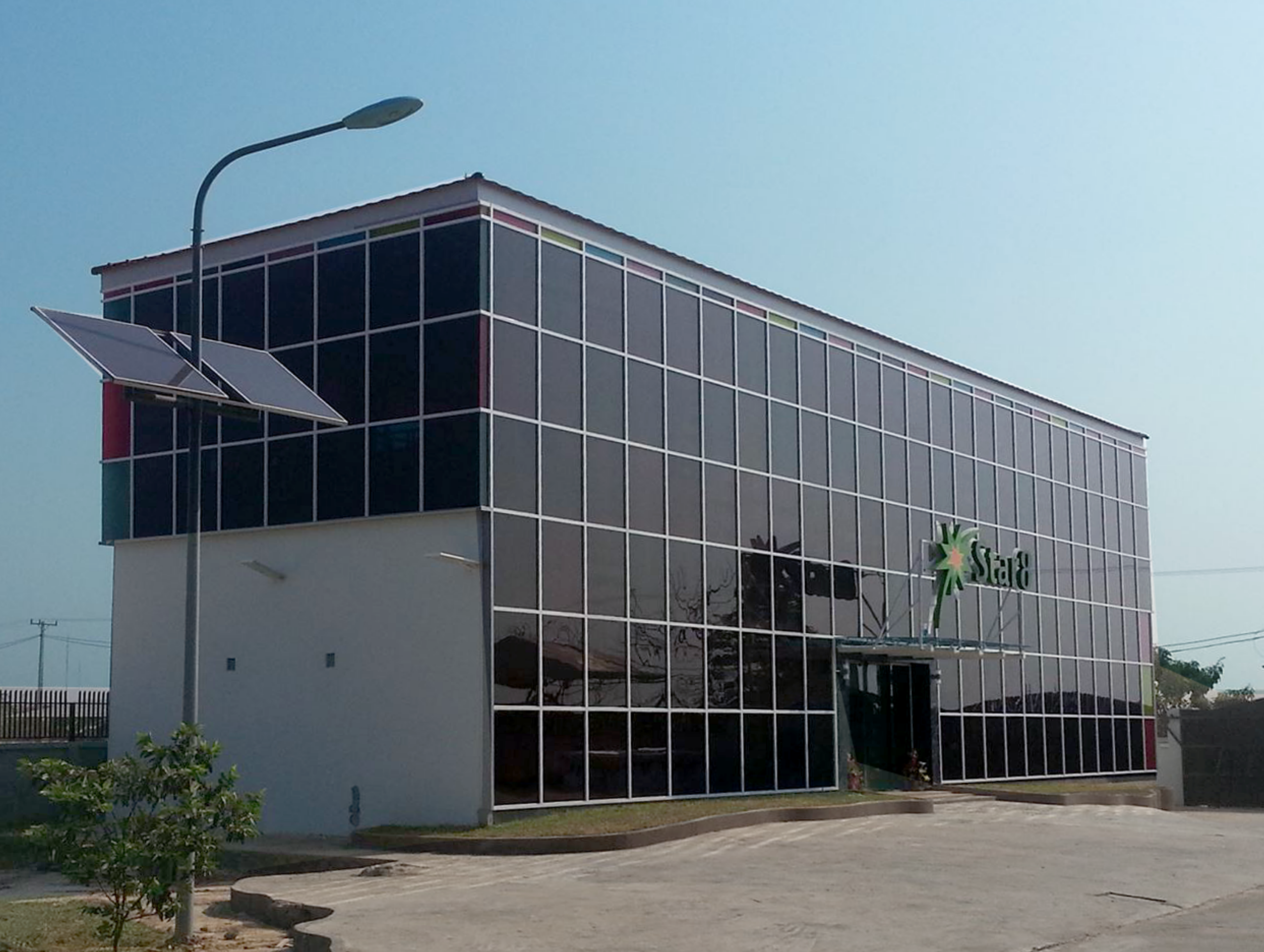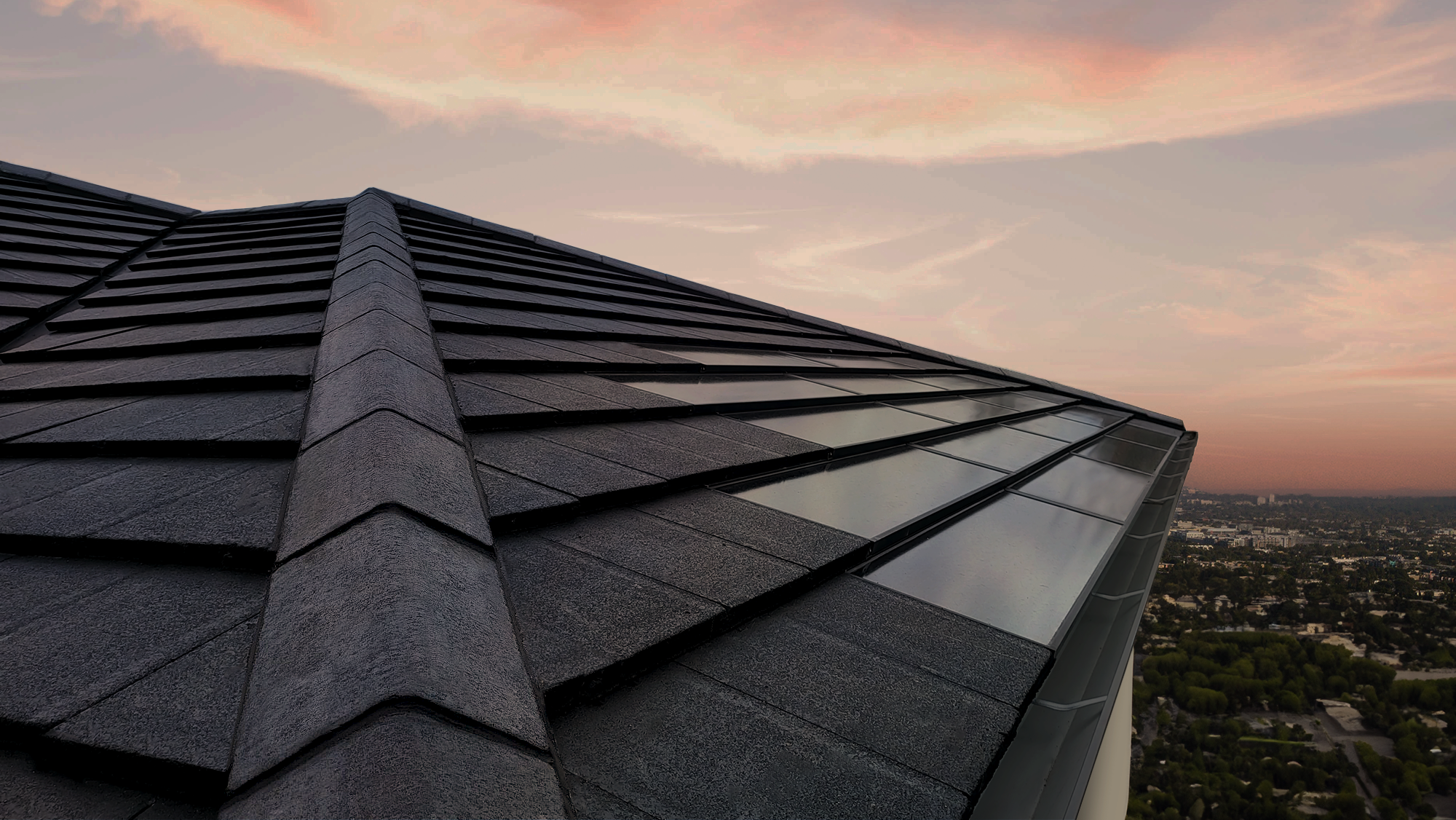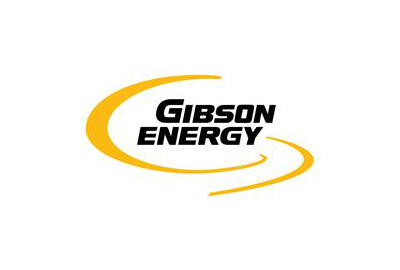Sign up for daily news updates from CleanTechnica on email. Or follow us on Google News!
Peter Leeson, CEO of the Leeson Group, sat down with me yesterday for a video interview from his base in Melbourne, Australia (almost 2000 km away from Brisbane where I sat at my computer). I was excited to hear about their product — the Volt solar roof tile — and its progress in the domestic and global market. The interview was shoehorned in between the many back-to-back meetings that filled Peter’s busy schedule, be was generous with his time and information. Of course, Peter also drives a Tesla Model 3.
Volt is part of Leeson Group. It describes its solar roof tile thus on the company’s website:
“Using a unique Metal Wrap Through (MWT) cell technology and a busbar-free design to increase the efficiency of solar cells, Volt utilises a built-in cable containment system, improving safety by removing live wires from the roof space. Volt also interlocks with surrounding tiles, ensuring a seamless and waterproof rooftop.
“The Volt Planum and Lodge solar tiles are the world’s first solar tiles that can generate the equivalent amount of energy as a standard solar panel. The 115W MWT mono PERC Planum module has a market leading 18.8% solar efficiency and the Volt Lodge solar tile 105W MWT mono PERC module has a solar efficiency of 19.5%.”
The Volt solar tile is available for new builds and reroofing solutions through Bristile roofing in Australia and Spain-based roof tile manufacturer La Escandella globally.
It takes an exceptional entrepreneur to bring new products to market, and Peter is one of many that I have interviewed as part of my time writing for CleanTechnica. He started as an electrician running his own business from the age of 22. The business moved into renewables in 2008 installing residential and commercial solar power systems. In 2010, Peter starting designing 3D models for integrated systems for buildings — (BIPV) Building-Integrated Photovoltaics. These included solar facades, curtain walls, solar tiles, skylights, and solar windows. Peter has travelled through Asia and Australia designing and installing BIPV systems, including a 2000-panel facade system in Asia and countless solar tile systems.
Leeson Group has already developed 150 MW of solar farms and has projects amounting to 750 MW in the pipeline. The revenue from these projects has been used to develop the Volt solar tile, which was launched in October last year. Although the product is currently manufactured in China, Peter has plans to onshore production, probably in Victoria, by the first half of 2025. It is expected to take 15 months to build the production line, with machines being imported from Europe. Then the aim is to ramp up to 250 MW of production per annum by 2027.
As well as its global ambitions, Volt Australia has partnered with 40 solar sales and installation businesses around Australia and Peter expects that it will scale up to 100 in short order. One of the main selling points for the Volt system in Australia is its ease of installation. A recent 21 kW install just outside Brisbane in Queensland took the team 8 hours compared with a standard solar panel system which would have taken up to 3 days to install. “One of the biggest barriers to date for solar tile roof uptake, has been the time it takes to install,” Peter tells me.
Volt currently has 12 primary markets, and has completed 15 installs in Australia, Spain, France, and Turkey. Many more installations are in the pipeline. He reminded me that it takes 12 months to go through the planning and construction process. “We have a good model, but it’s still a startup.” He is expecting a massive uptick by 2025. Peter projects that in 2025 they will be installing several thousand systems globally per year, or about 9 MW, with sales in even more countries.
By December/January 2024, Peter expects that the Volt will be installing its first projects in the USA, working with distributors in the USA, including a partnership with Santa Fe Tile based in Miami, Florida. Volt partners use the La Escandella roof tile from Spain. La Escandella has links to European countries and the Middle East totaling 85 countries, making it easy for Volt to penetrate global markets. According to its website:
“La Escandella is a family business with more than 50 years experience in the manufacture of ceramic products. Our great knowledge in the sector, combined with the thousands of projects carried out, help us to provide qualified professional advice for the selection of ceramic materials. Because each architectural project is unique, our personalized advice helps you make it…. The philosophy of constant innovation and commitment to sustainability, as well as experience in a variety of markets, has allowed us to be pioneers in the integration of solar panels in our tiles with a great aesthetic and technical result. The perfect integration.”
From Santa Fe’s sustainability statement: “We identify partners that share our values, one of the most important being a strong commitment to preserving and protecting the environment.”
Volt is completing testing for certification across every state in the USA to make sure the product complies with local standards for market entry. The distribution channels have been set up. “There’s a lot of demand in the US, but we won’t launch till all the certification is complete. Our roof is much cheaper than the Tesla roof, perhaps only 25% of the cost. The Volt tile can fit in with an existing product (the La Escandella Plannum tile). This means that through existing distribution and installation channels Volt has the capability and capacity to deliver an easy to install product.”
Volt has completed installing the largest solar tile installation in the world on one home (100 kW) in Turkey. Peter is a fan of Elon Musk, but can’t help but make a comparison with the market leader. “This installation is twice the size of Tesla’s nearest one.”
“It’s an absolute thrill to say a product concept that we thought of eight, nine years ago … and this week I was in Turkey installing it on a roof … so it’s a little bit of a surreal moment.” One of Australia’s largest builders is putting the Volt tiles on about 14 of its display homes.
How do you get one? Enquires are handled through the Volt website for reroofing and new builds. The customer just picks a tile and selects the color. The enquiry form process can also include design issues. A summary will be automatically generated and sent to the customer.
Good luck in the great US of A, Peter, as Volt solar tiles becomes yet another Australian export winner.
Have a tip for CleanTechnica? Want to advertise? Want to suggest a guest for our CleanTech Talk podcast? Contact us here.
EV Obsession Daily!
I don’t like paywalls. You don’t like paywalls. Who likes paywalls? Here at CleanTechnica, we implemented a limited paywall for a while, but it always felt wrong — and it was always tough to decide what we should put behind there. In theory, your most exclusive and best content goes behind a paywall. But then fewer people read it!! So, we’ve decided to completely nix paywalls here at CleanTechnica. But…
Thank you!
Tesla Sales in 2023, 2024, and 2030
CleanTechnica uses affiliate links. See our policy here.

